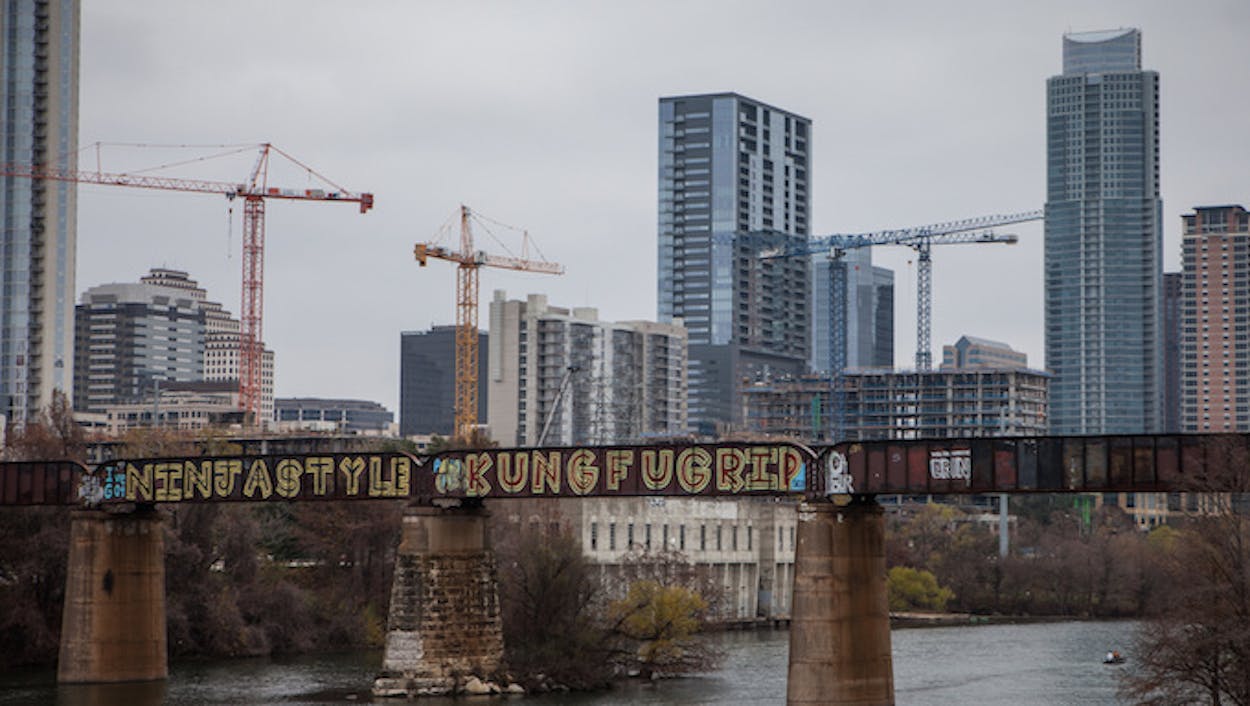Hey, Houston and Austin: More bad news, y’all. Not only are both cities in the path of a serious tropical storm, but all of you recent home buyers, those of you whose homes are currently at risk of flooding, may have also paid too much for your properties in the first place.
That’s the takeaway from a new list from Forbes that looks at the most overvalued (and undervalued, but we don’t need to worry about that right now) housing markets in the United States. The very first spot on the list? Austin, where the average home price in April 2015 was $341,054. And coming in at #2 we have Houston, where the average clocked in at over $500,000 in May. (Those are averages, mind you, not median prices, which means that they’re skewed by scatterings of exhorbitantly priced homes.)
Still, the difference between mean/median/average aside, both cities are overvalued by nearly 20 percent, according to Forbes. The reason for the overvaluation in Texas, though, is different from those in the three cities that rank below Austin and Houston on the list:
While all five of the Most Overvalued Housing Markets have seen home prices grow faster than the local economies, the underlying reasons fall into two widely divergent trends. In the Austin and Houston metro areas, native demand has simply driven up prices faster than economic growth. In the other three top markets, low building rates and underwater mortgages have held back supply, so that small changes in demand have had a magnified impact on prices.
In other words, supply and demand are still the basis for overvaluation in all five cities, but in Phoenix, Miami, and Riverside, California, the supply has been restricted by developers cautious about overbuilding in the event of another crash, and by speculators who are holding onto properties they bought on the cheap for the biggest possible payday.
In Austin and Houston, meanwhile, the demand is more organic, because the housing crash mostly avoided Texas. The issue here is that demand for houses has outpaced the factors that typically drive that demand: job growth and the overall local economy. Home prices in Austin rose by 34 percent in 2014, while employment growth was only 21 percent.
Unlike most of the country, the Lone Star State did not experience a dramatic drop in housing prices during the economic downturn and housing crash. The state’s unemployment rate was lower, its economic growth stronger, and as the rest of the nation was still stuck in the doldrums, Texas began to grow. Texas did not experience a flood of investors snapping up distressed properties and pushing up prices–there weren’t super-undervalued properties available to buy. Its price escalation has come largely from the demand that accompanies a strong economy. It’s just been a bit faster than underlying fundamentals.
Being overvalued isn’t necessarily the worst thing in the world, of course. Forbes points out that both cities also made its “where to invest in housing in 2015” list this year, and the circumstances in Austin and Houston aren’t the circumstances that we usually describe as a bubble; rather than prices crashing down to earth, they’re more likely to slow their price growth to catch up with the actual growth in demand. So owner-occupants can probably take a deep breath (while they wait for the water to start coming in). The days when investing in Houston or Austin real estate was a license to print money could come to an end soon, but they’re a long way off from actually losing money.








